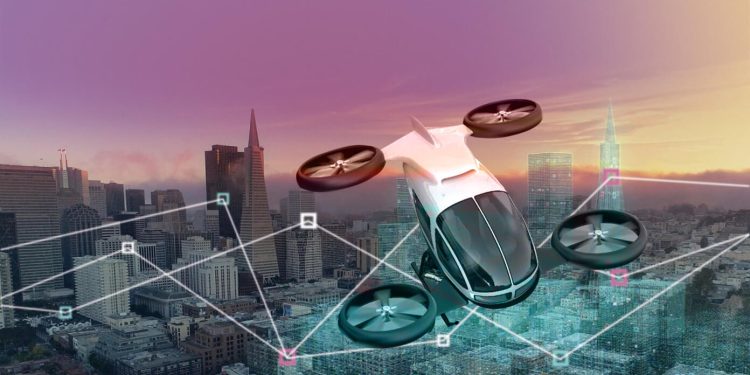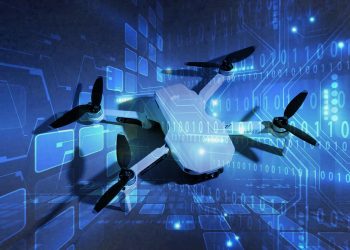The diversity of commercial use of drones has expanded with the rapid development of drone technology. Data reveals a spike in the registration of drone users. More than 100,000 new civilian drone users were recorded in 2021. Drones are being deployed in different sectors, and several unique uses are being tested. This article tries to capture a picture of what modern drones can do and how they might be used in the foreseeable future.
Delivery Services
Unmanned aerial vehicles (UAVs) or delivery drones can deliver lightweight packages. They can be operated autonomously or remotely, which may soon change last-mile delivery economics for smaller and lighter parcels. Several companies have already started testing drones for time-sensitive deliveries, including Amazon, which plans to begin 30 minutes delivery via their Prime Air Delivery option. This has stimulated discussion of what the technology can accomplish. Below are some advantages and drawbacks associated with drone delivery services.
Advantages:
- Reduced roadway congestion.
- Reduced shipping costs for the sender and the recipient.
- Faster deliveries.
- Greater route flexibility.
- Reduced roadway and bridge maintenance costs.
- Improved safety.
- Reduced greenhouse gas emissions.
Disadvantages:
- Limited package weights.
- Constrained flight times.
- Unpredictable events, such as bad weather or wildfires.
- Loss and shrinking of jobs for shipping and logistics people.
- Privacy concerns for consumers.
- Regulatory barriers and restrictions.
Agriculture
The agriculture sector has aimed to increase food production while remaining sustainable. Several new technologies are leveraged to accomplish these goals, such as high-tech sensing devices based on GPS, remote sensing, farm software, and recently – drone technology. With the help of drones, farmers can optimize both farm profitability and productivity based on real-time field information. These uncrewed aerial vehicles can fly at extreme altitudes and carry various recording devices and navigation systems to fetch valuable information from the fields. Initially just used for spraying chemicals, this technology is helping farmers in several ways today:
- For capturing aerial imagery.
- Using various algorithms, they can collect raw data and translate it into useful information.
- They can be used to monitor vital parameters, including – Crop health, Plant height, Soil analysis, Water needs, etc.
- With the help of drones, farmers can optimize the use of fertilizers, pesticides, water, etc., more efficiently.
- They can help with the early detection of crop disease.
With the help of drones, planting success has been observed to be about 75%, and costs are reduced by 85%.
Damage assessment
In the insurance sector, drones have been used since 2017, when Hurricane Harvey disrupted people’s lives in the United States. Insurance companies used drones for damage assessment. Drone technology has progressed immensely since then and taken surveillance to the next level.
Advantages of drones in the insurance sector
- They can easily reach inaccessible areas.
- They can easily reach rugged terrains and assist with surveillance.
- Surveyors need not reach the affected location.
- A single person can easily manage a broad site.
- Drones help prevent misinterpretation and encourage verification.
- Damage assessment could be made faster and sooner.
- Customers become more satisfied with the service of the insurance company.
- Drones can be used to inspect properties before signing insurance agreements.
Search and Rescue
Various civilian and military organizations participate in citizen security programs. In a bid to offer maximum security for citizens without any danger, they take several steps and leverage different technologies. One of the latest technologies used in search and rescue missions is – drone technology. It has a better advantage of collecting and analyzing the data, and its use is practical in most cases. Nowadays, drones are used in fire detection, extinguishing, and marine rescue.
Some advanced capabilities today’s search and rescue drones are equipped with are:
- Most commercial drones today are GPS equipped.
- Many have thermal imaging features for better spotting of live humans.
- Several drones also come with live viewing and broadcast capability, allowing command crews to guide rescue teams to precise locations.
Although drone technology is quite advanced today, drone-powered search and rescue missions suffer from the short flight time limitation, which is about 25 min.
Security and surveillance
The military and security services have been using drones for surveillance for quite some time. These unmanned aerial vehicles give them a better view of streets traffic and an advantage in capturing fugitives. They are also used in the events of hostage crises. There are several advantages of using drones in emergencies and rescue missions:
- For capturing real-time visual and infrared data for immediate analysis.
- Using insights to make rapid and precise decisions.
Currently, there are strict rules regarding the use of drones in open and populated areas where people reside. So this problem must be addressed for better security and surveillance using drones.
Weather Forecasting
With their superior ability to predict storm formations, drones can be a savior when it comes to predicting severe weather conditions. With their ability to forecast and predict the most accurate information to scientists and the public, they are set to become the weather forecasters of the future. Besides predicting storms, they can be used to predict severe weather changes.
The technology is constantly moving forward, and drones are increasingly becoming more effective at collecting data. Traditionally, weather-related data is collected using radars, satellites, and weather balloons, but that data always has anomalies. Drones provide real-time data to scientists that they could not reach before. With their ability to provide real-time data, drones can predict the weather with higher accuracy, and they can predict storms much sooner, saving thousands of lives.
Medical Emergencies
Every second is precious in emergency health response situations. The timing of the response determines how likely the patients are to survive and how well they recover.
Unfortunately, with traditional health emergency response methods, several precious minutes are wasted before a qualified first responder can attend to the situation. Medical emergency drones, developed by scientists at the Delft University, Netherlands, can arrive at the emergency site much faster. These drones are also equipped with a mobile Automated Defibrillator (AED), which the first responders can utilize in the events of cardiac arrests.
Drones have been very significant in rapidly delivering vaccines, medications, and supplies to difficult-to-reach areas in the past two years. Researchers are also exploring the possibility of monitoring critically ill patients with drones and delivering meals to those who cannot prepare their own meals.
Also Read: Top Autonomous Drones Trends to Help the Industry Fly High in 2022
Conclusion:
As the utility of drones becomes more defined and refined with time, new and more innovative utilities of this technology will emerge. The list may soon be limitless, just like the possibilities this technology brings with it.








